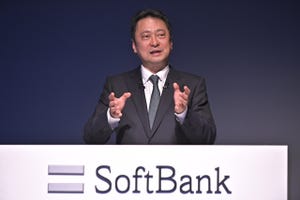China Mobile Flexes LTE Muscle
China Mobile wants to start LTE trials, but has to wait on chipset and equipment availability
September 2, 2008

China Mobile Communications Corp. wants to start testing its so-called 4G technology TD-LTE soon, and through its demands for the technology, the operator has become one of the biggest driving forces behind the development of LTE worldwide.
The world's largest mobile operator by subscribers with 415 million customers is champing at the 4G bit. China Mobile's chairman and CEO Wang Jianzhou said today that he hoped to start trialing TD-LTE very soon, but that a lack of chipsets held those plans back.
China Mobile champions TD-LTE, which is a time division duplex (TDD) version of LTE that will be backwards compatible with the homegrown Chinese 3G standard TD-SCDMA. The TD-LTE specifications are scheduled to be completed by the end of this year along with the primary LTE/system architecture evolution (LTE/SAE) specifications. (See LTE Focus Puts Pressure on Femtocells and LTE Specs on Track.)
“China Mobile is pushing the industry and its vendors very quickly on TD-LTE,” says Gabriel Brown, senior analyst at Heavy Reading. “They’re a hugely influential carrier now.”
China Mobile joins the ranks of NTT DoCoMo Inc. (NYSE: DCM), Verizon Wireless , and Vodafone Group plc (NYSE: VOD) in the industry push for the 4G technology. And, significantly, China Mobile's TD-LTE will be compatible with the rest of the world's LTE, which is based on frequency division duplex (FDD).
China Mobile basically bridged the gap between TDD and FDD in LTE at the end of last year when it proposed what is now known as the "8+3 Proposal," which defined a new frame structure that would make a TDD version of LTE compatible not only with China's 3G TD-SCDMA, but also with FDD LTE. That proposal was the basis for today's TD-LTE spec that the 3rd Generation Partnership Project (3GPP) aims to complete by the end of the year.
The basic difference between FDD and TDD systems is that time division duplex systems use a single channel and timed transmissions to broadcast over the air, whereas frequency division duplex systems use two channels for radio send and return signals. The use of a single channel makes TDD much more spectrally efficient; however, operators have traditionally tended to favor FDD for voice.
“Industry talk is that China Mobile wants to move to LTE as quickly as possible and they want to run it on their 3G spectrum,” says Brown.
But, unfortunately for the Chinese operator, TDD LTE development lags behind FDD LTE developments. It is expected that the first commercially available LTE equipment will support FDD. And equipment that supports both modes will follow. One industry estimate for commercial availability of TDD LTE terminals is mid-2010.
China Mobile recently unveiled plans to launch 3G services by the end of June next year in 38 cities. But the operator is clearly eager to move on to 4G technology. (See China Mobile to Unleash 3G Next Year.)
“The major 3G vendors will have dual [TDD and FDD] functionality, but FDD will come first,” says Brown.
To work on the dual TDD/FDD capabilities, China Mobile has joined forces with Verizon and Vodafone in their joint LTE trial. The equipment vendors participating in that trial are Alcatel-Lucent (NYSE: ALU), Ericsson AB (Nasdaq: ERIC), Motorola Inc. (NYSE: MOT), Nokia Networks , and Nortel Networks Ltd. Those trials are underway. (See China Mobile Joins LTE Threesome, Verizon, Vodafone Head for LTE, and Verizon Goes LTE.)
Ericsson, for example, has demonstrated LTE in both TDD and FDD mode on the same base station platform. (See Ericsson Demos LTE.)
— Michelle Donegan, European Editor, Unstrung
About the Author(s)
You May Also Like












